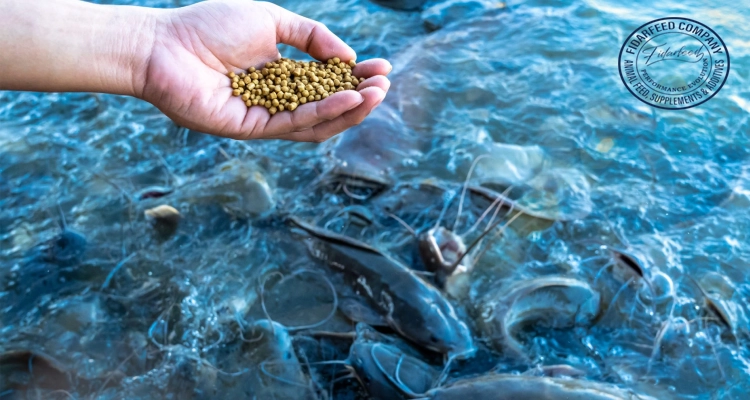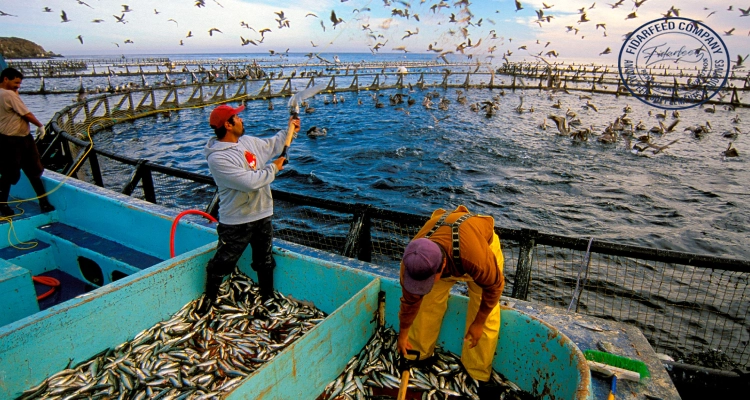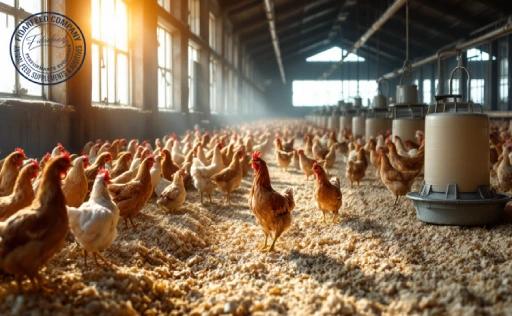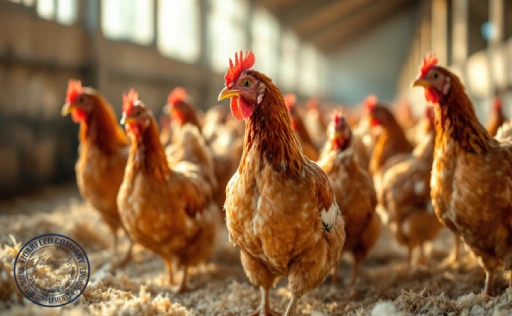
How Are Farmed Fish Fed? This question might seem simple on the surface, but the answer unlocks a complex, fascinating world at the heart of modern aquaculture. Feeding is more than just tossing pellets into a pond—it’s a delicate science that determines how well fish grow, how healthy they remain, and how profitable a farm can be. Whether you’re a seasoned fish breeder, new to aquaculture, or working in the fish feed industry, understanding feeding practices is key to success. In this article, we’ll walk you through the essentials and the innovations of feeding farmed fish—so keep reading to find out how feeding practices are evolving and how you can improve yours.
How Are Farmed Fish Fed and Why It Matters in Aquaculture
Feeding farmed fish involves more than just providing food. It’s about delivering the right type of nutrition, at the right time, in the right quantity. This process directly affects fish growth rates, survival, immune function, and feed conversion ratios (FCR)—all critical factors for a successful aquaculture operation.
Learn more about: Aquaculture Water & Soil Probiotic
For example, a tilapia farm using efficient feeding protocols can achieve an FCR of 1.6, meaning it only takes 1.6 kg of feed to produce 1 kg of fish. Poor feeding, on the other hand, can lead to high mortality, poor growth, and wasted resources. In short, feeding is where science meets economics.

How Are Farmed Fish Fed: Different Feed Types Explained
Aquaculture feeds come in many forms, tailored to different species and life stages. The most common types include:
-
Dry pellets: These are the industry standard, especially for species like salmon, tilapia, and catfish. They are easy to store, transport, and use.
-
Extruded feed: These are high-energy, floating pellets made through a process that increases digestibility. They’re great for monitoring intake since uneaten pellets remain visible.
-
Wet feeds: Often used in traditional or small-scale farms, wet feeds are usually made from minced fish or agricultural byproducts. They spoil quickly and are harder to manage.
-
Live feed: Essential for larval and juvenile stages, live feed such as Artemia or rotifers offer high palatability and nutritional value.
Learn more about: Why Choose Prepared Feed for Your Farm Animals: Livestock, Poultry, and Aquaculture
Different fish have different preferences. Carnivorous fish like trout may require high-protein extruded pellets, while herbivorous species like carp can thrive on less protein-dense diets.
Feeding Strategies in Aquaculture: How Are Farmed Fish Fed Effectively?
Feeding strategies vary depending on species, age, water temperature, and farm goals. Some general guidelines include:
-
Juveniles: Feed 3–5 times daily with small rations to support rapid growth.
-
Adults: Feed 1–2 times a day with larger quantities.
-
Cold water: Fish eat less in colder conditions. Overfeeding can lead to waste and pollution.
-
Warm water: Higher metabolism means fish need more energy—adjust feed accordingly.
Learn more about: Reducing Fish Mortality in Aquaculture with Probiotics
For instance, during warm summer months, tilapia may need up to 3% of their body weight in feed daily. Smart farmers use feeding charts, observe fish behavior, and adjust rations frequently.

Nutritional Needs of Farmed Fish: What’s in the Feed?
Fish, like all animals, require a balanced diet. The main nutrients in aquafeed include:
-
Protein: Often the most expensive ingredient. Fish meal, soy protein, and insect meal are common sources.
-
Lipids (fats): Provide energy. Marine oils are traditional, though algae-based oils are gaining ground.
-
Carbohydrates: Energy sources that help reduce feed costs, especially in omnivorous species.
-
Vitamins and minerals: Critical for growth, bone formation, immunity, and reproductive health.
Learn more about: Probiotic Supplement for Aquatic Animal
Poorly formulated feeds can lead to deformities, slow growth, or weakened immune systems. Feed composition should always align with the species’ natural diet and physiological needs.
Manual vs. Automatic Feeding Systems: What Works Best for Your Farm?
Traditionally, fish were hand-fed—a method still used in many small-scale operations. It allows for direct observation of fish behavior but can be labor-intensive and inconsistent.
Automatic feeding systems, on the other hand, are programmable and precise. They include:
-
Time-based feeders: Dispense feed at scheduled intervals.
-
Demand feeders: Activated by fish behavior (e.g., a paddle strike).
-
Smart feeders: Linked with sensors and AI to optimize feeding based on appetite and water parameters.
Learn more about: Stress in Aquaculture: Understanding the Effects and Mitigation Strategies
In a Norwegian salmon farm, switching to automated feeding increased feed efficiency by 15% and reduced labor by 30%. That said, initial investment can be high—so the choice depends on farm size and budget.

How Water Quality Affects Feeding Efficiency and Fish Health
Water quality and feeding are two sides of the same coin. Overfeeding leads to uneaten feed, which breaks down and releases ammonia and nitrites, reducing oxygen levels and harming fish.
Poor water conditions can cause stress, reduce appetite, and trigger disease outbreaks. To maintain balance:
-
Monitor oxygen, temperature, and ammonia levels daily.
-
Use floating feed for easy removal of uneaten pellets.
-
Avoid feeding during low-oxygen periods (early morning).
Learn more about: Protect Your Aquatic Life with Probiotics
In recirculating aquaculture systems (RAS), maintaining water quality is especially critical since water is reused and waste buildup can be rapid.
Common Feeding Mistakes Fish Farmers Should Avoid
Even experienced breeders sometimes fall into feeding traps. Here are a few common errors:
-
Overfeeding: Wastes feed, pollutes water, and promotes disease.
-
Underfeeding: Leads to slow growth and poor harvests.
-
Ignoring behavior: Fish appetite changes with stress, temperature, or disease.
-
Uniform feeding: Not adjusting feed for different size groups can cause stunted growth.
Learn more about: Can Probiotics Really Boost Fish Growth in Aquaculture?
Keeping detailed feeding logs and training staff in feed management can help avoid these costly mistakes.

Sustainable Fish Feeding: Are Eco-Friendly Feeds Worth It?
Sustainability is no longer optional—it’s the future of aquaculture. Eco-friendly feeds aim to reduce reliance on wild-caught fish meal and oil. Alternatives include:
-
Plant-based proteins: Soy, wheat, or pea protein—cost-effective but sometimes less digestible.
-
Insect meal: Black soldier fly larvae offer high protein and are grown sustainably.
-
Algae-based oils: Replace fish oil and reduce pressure on marine ecosystems.
Learn more about: Discover Zeolite Benefits for Health in modern animal breeding: From Cattle to Fish
A 2021 study published in Aquaculture Reports showed that trout fed a 50% insect-based diet had growth rates nearly equal to those on a fish meal diet—an encouraging sign for sustainable aquafeeds.
Monitoring and Adjusting Feeding Practices: Tools and Tips for Better Results
To optimize feeding:
-
Observe behavior: Slow swimming, reduced surface activity, or leftover feed may indicate issues.
-
Use growth tracking: Measure fish bi-weekly and adjust feed volume accordingly.
-
Install sensors: Some systems track oxygen, feed uptake, and biomass in real time.
Learn more about: Reducing Fish Mortality in Aquaculture with Probiotics
Digital platforms like eFishery and AquaManager now allow farmers to make data-driven feeding decisions remotely, maximizing efficiency and sustainability.

Innovations in Aquaculture Feed Technology: What’s Next?
The future is smart. New technologies are transforming how we feed farmed fish:
-
AI-powered feeders: Use machine learning to detect feeding patterns and adjust in real time.
-
Precision feeding drones: Deliver feed across large pond systems with pinpoint accuracy.
-
Biotech-enhanced feeds: Contain probiotics or immune boosters to reduce disease dependency.
Learn more about: Feeding Farmed Fish: Best Practices and Nutritional Requirements
These tools aren’t just “nice to have”—they’re becoming essential for staying competitive in the global aquaculture market.
Conclusion: Mastering Fish Feeding for Healthier Stocks and Higher Yields
Feeding farmed fish is both an art and a science. By understanding feed types, nutrition, water quality, and new technologies, you can transform feeding from a cost center into a powerful growth engine for your farm. Whether you’re feeding by hand or using AI-driven systems, success starts with knowledge and attention to detail.
Got questions or experiences to share? Let’s keep the conversation going—drop a comment below, ask anything you’re curious about, or tell us how you’re feeding your fish. Your insights could inspire others in the fish breeding and feed industry.



